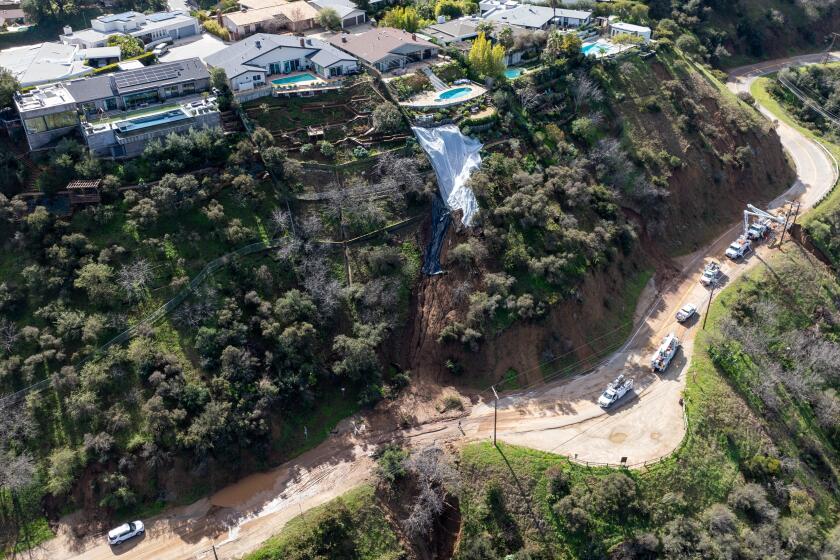Maher’s Hope of Recovery Dim, Doctors Say
The survival rate for most people with the type of tumor that afflicts San Diego Roman Catholic Bishop Leo T. Maher is about one year, even with aggressive radiation and chemical therapy, a neurosurgeon who helped to remove most of a fast-growing growth from Maher’s brain said Friday.
Although therapy could help Maher survive for more than a year, the survival rate for “a high majority” of patients with the fast-growing tumor is “pretty low,” said Dr. Brian Copeland, who conducted brain surgery on Maher at Scripps Clinic & Research Institution.
Maher, who was reported in satisfactory condition on Friday, could be released from the hospital this weekend, Copeland said. Maher “is in no immediate danger,” Copeland said. His future health “depends upon how good of a handle we can get” on controlling the growth of a tumor in the rear of his brain.
Surgeons on Wednesday removed most of the cancerous growth from the rear of Maher’s brain during a 2 1/2-hour operation. Maher checked into Scripps on Monday, complaining of a loss of physical strength and impaired peripheral vision.
Maher will continue to lead the local Roman Catholic diocese while undergoing radiation and chemotherapy for the life-threatening tumor, diocesan spokesman Dan E. Pitre said Friday.
However, church law demands that bishops retire when they turn 75, and diocesan officials believe that Maher will be able to continue serving as bishop until his 75th birthday July 1, Pitre said.
Although the life expectancy for most patients who develop a grade-four tumor is less than a year, “it’s hard to give a figure” for Maher, Copeland said. “There are certain long-term survivors.”
Maher’s chances of surviving for longer than a year will be determined by how well the tumor responds to radiation and chemical therapy that will begin in a few weeks, Copeland said. Although radiation therapy is the normal treatment for the tumor, Maher also will undergo new chemical therapies being tested at Scripps, Copeland said.
Maher is afflicted with the same type of tumor as national Republican Party leader Lee Atwater, Copeland said. However, Maher’s tumor was diagnosed as grade four, the fastest-growing type, while Atwater’s slower-growing tumor evidently has responded well to therapy, Copeland said.
Maher’s recovery “depends in part upon his physical condition and attitude,” Copeland said. “His attitude right now is so positive. I’m real impressed with the guy.”
Doctors will determine the size of Maher’s tumor before the start of radiation therapy, Copeland said. Similar tests will be completed after therapy is completed, to determine if the treatment is succeeding, Copeland said.
Therapy is important because, without it, the tumor would continue to grow. Eventually, the tumors cause pressure on the rest of the brain. “When that occurs, patients tend to lose consciousness,” or lose important brain functions, according to another doctor who assisted in Maher’s Wednesday operation.
More to Read
Start your day right
Sign up for Essential California for news, features and recommendations from the L.A. Times and beyond in your inbox six days a week.
You may occasionally receive promotional content from the Los Angeles Times.






